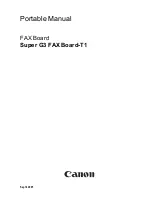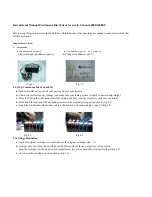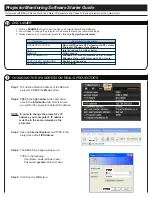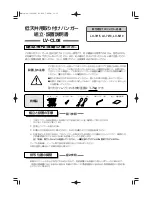
88
CONSOLIDATION OF VARIABLE INTEREST ENTITIES
In January 2003, the FASB issued FIN No. 46,
“Consolidation of Variable Interest Entities – an
Interpretation of ARB No. 51”, which addresses
consolidation by a primary beneficiary of a VIE.
FIN No. 46 became effective immediately for all
new VIEs created or acquired after January 31,
2003. Sony has not entered into any new
agreements with VIEs on or after February 1,
2003. For VIEs created or acquired prior to
February 1, 2003, Sony early adopted the provi-
sions of FIN No. 46 on July 1, 2003. Under FIN
No. 46, any difference between the net amount
added to the balance sheet and the amount of
any previously recognized interest in the VIE
shall be recognized as a cumulative effect of
accounting changes. As a result of adopting FIN
No. 46, Sony recognized a one-time charge
with no tax effect of 2.1 billion yen as a cumu-
lative effect of accounting change in the con-
solidated statement of income, and Sony’s
assets and liabilities increased by 95.3 billion
yen and 98.0 billion yen, respectively. These
increases were treated as non-cash transactions
in the consolidated statements of cash flows. In
addition, cash and cash equivalents increased
by 1.5 billion yen. See Consolidated Financial
Statements Note 22 for further discussion on
the VIEs that are used by Sony.
In December 2003, the FASB issued a revi-
sion to FIN No. 46 (“FIN No. 46R”), which
replaces FIN No. 46. FIN No. 46R retains many
of the basic concepts introduced in FIN No. 46;
however, it also introduces a new scope excep-
tion for certain types of entities that qualify as
a “business” as defined in FIN No. 46R, revises
the method of calculating expected losses and
residual returns for determination of a primary
beneficiary, and includes new guidance for as-
sessing variable interests. Sony early adopted
the provisions of FIN No. 46R upon its issu-
ance. The adoption of FIN No. 46R did not
have an impact on Sony’s results of operations
and financial position or impact the way Sony
had previously accounted for VIEs.
IMPAIRMENT OF SECURITIES INVESTMENTS
In November 2003, the Emerging Issues Task
Force (“EITF”) reached a consensus on EITF
Issue No. 03-01, “The Meaning of Other-Than-
Temporary Impairment and Its Application to
Certain Investments”. EITF Issue No. 03-01
establishes additional disclosure requirements
for each category of FAS No. 115 investments
in a loss position. In March 2004, the EITF also
reached a consensus on the additional ac-
counting guidance for other-than-temporary
impairments and its application to debt and
equity investments. In accordance with the
new disclosure requirements under EITF Issue
No. 03-01, the disclosure in the consolidated
financial statements has been expanded to
include certain additional information regard-
ing Sony’s securities investments.
MULTIPLE ELEMENT REVENUE ARRANGEMENTS
In November 2002, the FASB issued EITF Issue
No. 00-21, “Accounting for Revenue Arrange-
ments with Multiple Deliverables”. EITF Issue
No. 00-21 provides guidance on when and how
to account for arrangements that involve the
delivery or performance of multiple products,
services and/or rights to use assets. Sony
adopted EITF Issue No. 00-21 on July 1, 2003.
The adoption of EITF Issue No. 00-21 did not
have a material impact on Sony’s results of
operations and financial position for the year
ended March 31, 2004.
DERIVATIVE INSTRUMENTS AND HEDGING
ACTIVITIES
In April 2003, the FASB issued FAS No. 149,
“Amendment of Statement 133 on Derivative
Instruments and Hedging Activities”. This state-
ment amends and clarifies financial accounting
and reporting for derivative instruments, in-
cluding derivative instruments embedded in
other contracts and for hedging activities
under FAS No. 133. Sony adopted FAS No. 149
on July 1, 2003. The adoption of FAS No. 149
did not have an impact on Sony’s results of
operations and financial position.
ACCOUNTING FOR ASSET RETIREMENT
OBLIGATIONS
On April 1, 2003, Sony adopted FAS No. 143,
“Accounting for Asset Retirement Obligations”,
which addresses financial accounting and
reporting for obligations associated with the
retirement of tangible long-lived assets and the
associated asset retirement costs. The adoption
of FAS No. 143 did not have a material impact
on Sony’s results of operations and financial
position for the year ended March 31, 2004.
ACCOUNTING FOR CERTAIN FINANCIAL
INSTRUMENTS WITH CHARACTERISTICS OF
BOTH LIABILITIES AND EQUITY
In May 2003, the FASB issued FAS No. 150,
“Accounting for Certain Financial Instruments
with Characteristics of both Liabilities and
Equity”. FAS No. 150 establishes standards for
how certain financial instruments with charac-
teristics of both liabilities and equity shall be
classified and measured. Sony adopted FAS
No. 150 during the first quarter of the year
ended March 31, 2004. The adoption of FAS
No. 150 did not have an impact on Sony’s
results of operations and financial position for
the year ended March 31, 2004.
RECENT PRONOUNCEMENTS
ACCOUNTING AND REPORTING BY INSURANCE
ENTERPRISES FOR CERTAIN NONTRADITIONAL
LONG-DURATION CONTRACTS AND FOR
SEPARATE ACCOUNTS
In July 2003, the Accounting Standards Execu-
tive Committee of the American Institute of
Certified Public Accountants issued Statement
of Position (“SOP”) 03-1, “Accounting and
Reporting by Insurance Enterprises for Certain
Nontraditional Long-Duration Contracts and
for Separate accounts”. SOP 03-1 provides
guidance on accounting and reporting by
insurance enterprises for certain nontraditional
long-duration contracts and for separate
accounts. This statement shall be effective for
fiscal years beginning after December 15,
2003. Sony is currently evaluating the impact
of adopting this guidance.
















































